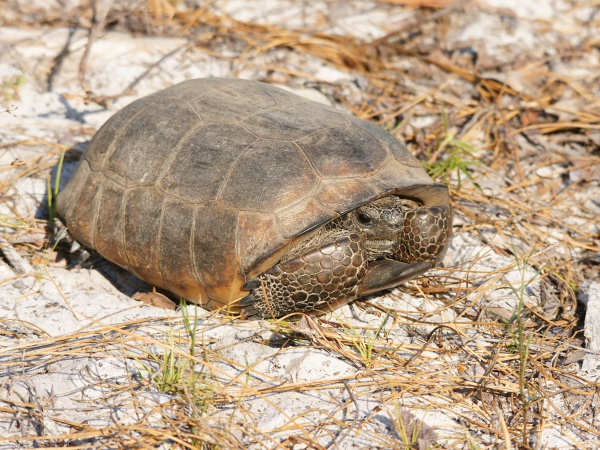Facts About Gopher tortoise
The gopher tortoise, scientifically known as *Gopherus polyphemus*, is a distinctive turtle species native to the southeastern United States. It is recognized as a keystone species because its burrows provide essential shelter for numerous other animals. This tortoise holds special designations, being the state reptile of Georgia and the state tortoise of Florida.
Gopher tortoises are herbivores with a diverse diet encompassing over 300 plant species. They are renowned for their burrowing proficiency, constructing extensive tunnels that offer protection from predators and extreme weather conditions.
Regarding reproduction, gopher tortoises exhibit fascinating courtship rituals. Females lay eggs that incubate underground, with the temperature determining the sex of the hatchlings.
Unfortunately, gopher tortoises face several threats, making conservation efforts critical. They are listed as "Threatened" by the U.S. Fish and Wildlife Service and considered vulnerable by the IUCN Red List. Habitat loss due to urbanization and development poses a significant challenge. Conservationists are diligently working to preserve the longleaf pine ecosystems that these tortoises require. Strategies include controlled burns and incentives for private landowners to safeguard wildlife habitats.
Climate change is another significant challenge, altering the tortoises' habitats and increasing the risk of invasive species. Additionally, diseases such as upper respiratory tract infections present serious threats. Efforts are underway to better understand and manage these health issues.
Human activities, such as illegal hunting and capturing tortoises for the pet trade, further endanger their populations. Conservationists emphasize the importance of protecting gopher tortoises to maintain biodiversity. Their burrows are crucial for many other species, making the gopher tortoise an indispensable part of their ecosystem.

 Mexico
Mexico